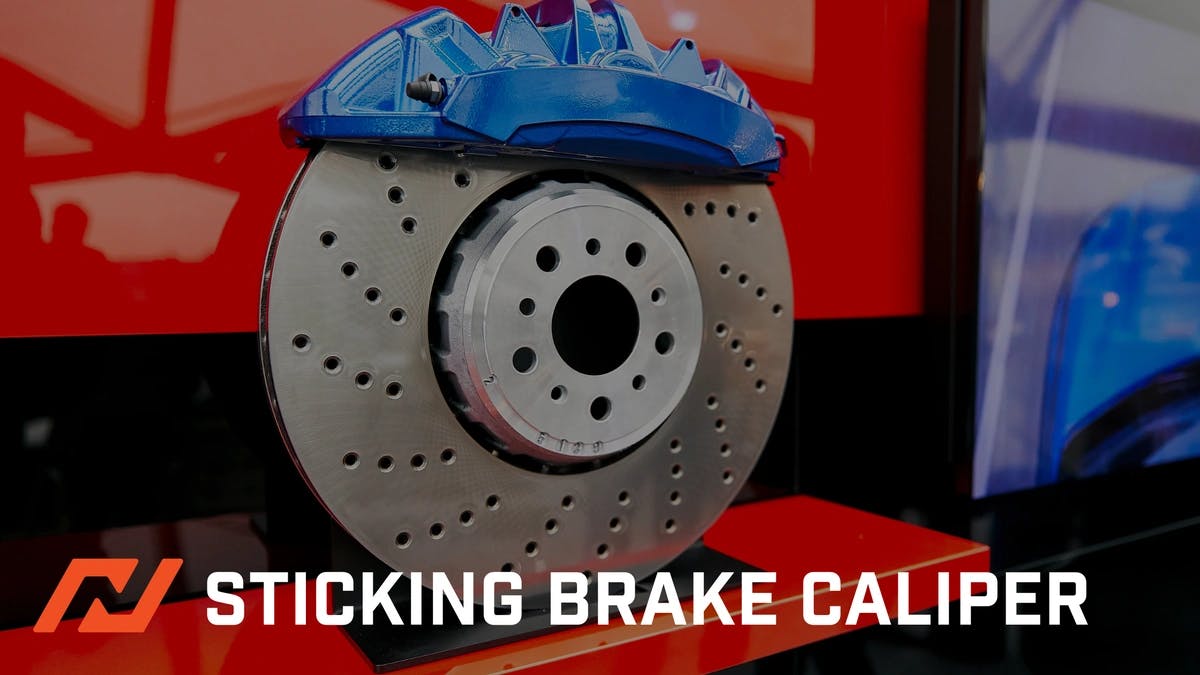Brake calipers are crucial to a vehicle's braking system, ensuring effective and reliable stopping power.
Their optimal performance is essential for the safety and efficiency of any car.
Understanding the importance of brake calipers and the potential problems they might face, such as sticking brake calipers, is essential for all car owners or enthusiasts.
Key Takeaways:
|
Understanding Brake Calipers
A brake caliper can be described as a hydraulic device that houses the brake pads and applies pressure when the brakes are used. It is generally positioned over the rotor (disc) in disc-braking systems.
Applying pressure on the pads against either side of the brake rotor generates friction, which slows down or stops the vehicle.
Insight on Sticking Brake Calipers as a Common Issue
Sticking brake calipers are a frequent problem that can impact vehicles equipped with disc brakes. When a caliper sticks instead of releasing after applying brakes, it fails to fully retract from contact with the rotor surface.
Consequently, it continues to exert pressure on either side of the rotor, leading to excessive heat and uneven wear on the brake pads. This not only undermines stopping power but also decreases fuel efficiency and can lead to premature brake component failure.
Sticking brake calipers can happen due to various factors.
Understanding the causes, symptoms, diagnostic methods, repair options, and preventive measures related to sticking brake calipers is vital for maintaining optimal braking performance and ensuring safe driving experiences.
Reasons for Brake Caliper Sticking
Brake calipers comprise various components that apply pressure on the brake pads, clamping onto the rotors to decelerate or halt the vehicle. However, several factors can lead to sticking brake calipers.
Moisture Accumulation
Over time, moisture buildup within the brake caliper assembly can lead to pistons or slide pins rusting, resulting in restricted movement and sticking or seized calipers.
Accumulation of Dirt or Debris
Dirt or debris accumulating within the caliper assembly is another factor leading to sticking brake calipers. Dust, road grime, and other particles can infiltrate the braking system through open areas or damaged seals, impeding smooth operation.
Degradation of Components
Degraded components significantly contribute to the issue of sticking brake calipers. For example, worn-out slide pins lose their lubricating properties and can become stuck due to increased friction between metal surfaces.
Seal Deterioration
Over time, the deterioration of seals or damage to piston boots can permit moisture and debris to penetrate critical areas of the caliper assembly, exacerbating the issue.
Symptoms of a Sticking Brake Caliper
Recognizing a sticking brake caliper early on is vital for your vehicle's safety and preventing further damage to other braking system components.
Car Veers to One Side
An observable pull towards one side while applying brakes is a common symptom of a sticking brake caliper. An imbalance in braking force causes it due to a brake pad not retracting correctly.
Uneven Brake Pad Wear
Uneven wear on brake pads is another sign of a sticking brake caliper. When a caliper sticks, it can cause continuous contact between the brake pad and rotor on that wheel, leading to accelerated wear on one side.
Excessive Heat Generation
Increased heat in one wheel area, detectable by a burning odor, can signify a sticking brake caliper. This excessive heat buildup is due to the high friction created by a stuck or partially engaged caliper.
Final Words
Addressing sticking brake calipers is crucial for maintaining optimal vehicle performance, safety, fuel efficiency, and overall longevity of critical components such as brake pads and rotors.
Regular inspection and maintenance are essential in preventing these issues from occurring or catching them early before they escalate into more severe problems.
With proper care for our braking systems, we can ensure smoother and safer rides, improve fuel economy, and prolong the lifespan of our vehicle's vital components.
So, let's stay vigilant and proactive in maintaining our brake calipers to enjoy worry-free journeys on the road.
Let Nubrakes Mobile Brake Repair handle your brake problems!
